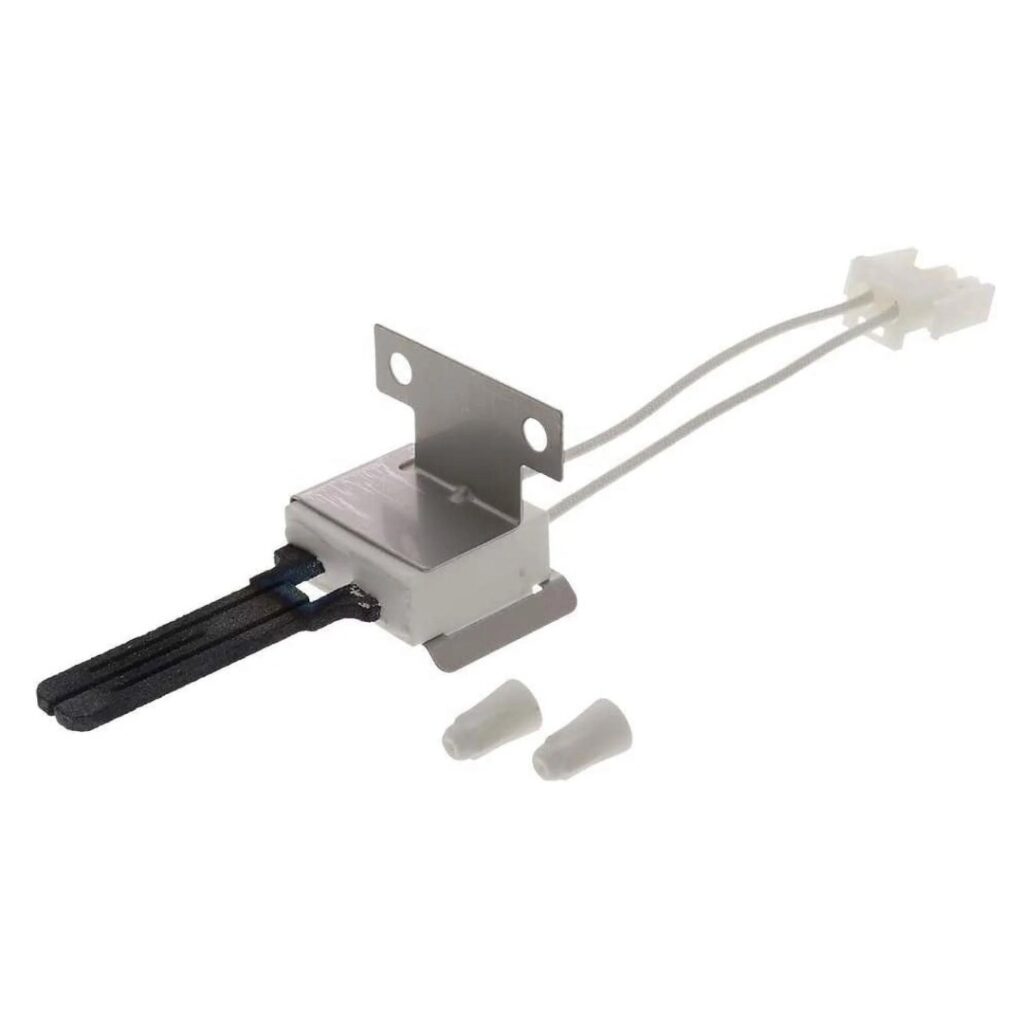Goodman gas furnace features an advanced automatic ignition system that eliminates the need for the manual lighting of a pilot light. Here’s how it works: upon triggering the heating cycle, the glow ignitor activates, paving the way for the automatic ignition of the pilot light, setting the stage for the furnace to spring to life and do its job of warming your house.
However, if you notice the glow ignitor engaging but the furnace doesn’t fire up, you’re left not with a cozy home but a cold problem. This scenario is a clear indication that something’s wrong with the Goodman furnace ignition system, and a bit of insightful inspection and troubleshooting might just be the lifeline your furnace needs to get back on its feet.

Let’s start on this Goodman furnace ignitor troubleshooting!
Step-by-Step Troubleshooting of a Goodman Furnace Ignitor
Okay, roll up those sleeves; we’re about to get down to the troubleshooting steps. The ignitor is the heart of your furnace’s start-up sequence. If it’s in trouble, the whole system’s out of whack.
So, how do we get to the bottom of it? Follow me!
- Safety First
Switch off the power to your furnace at the breaker box. We’re dealing with high voltage and intense heat. - Access the Unit
Now, you’ll need to locate the furnace ignitor. Open the furnace access panel – it’s usually front and center. You’re looking for a rod or a small, flat component that’s the hot surface ignitor. It’s near the gas jets. - Inspect the Ignitor
Here’s where your keen eye comes in. Is the ignitor coated with grime or white residue? If it’s just dirty, a gentle cleanup might bring it back to life. Use a soft brush – think toothbrush soft – and lightly dust it off. No hard scrubbing, please; you might damage the component. But what if it’s cracked or shows visible signs of wear? Proceed to step 4. - Replace if Necessary
Broken ignitor? No sweat. It’s a DIY-friendly task if you’re comfortable with basic handiwork. First, take a photo of the setup for reference. You’ll remove the old ignitor by unscrewing it from its mount (usually one or two screws), carefully avoiding touching the new ignitor’s filament with bare fingers (oils from your skin can cause it to burn out prematurely). Connect it the same way the old one was set up, referencing your photo as needed. - Test Your Work
With the new or cleaned ignitor in place, it’s a moment of truth time. Restore the power, turn up the thermostat, and observe the furnace’s start-up sequence. You should see the ignitor glow bright, followed by the whoosh of igniting gas. Did the room just get warmer, or is it just your sense of accomplishment?
There you have it! You’ve conquered the task. But remember, a happy furnace is a maintained furnace. Regular check-ins on your ignitor and other components extend the life of your unit and keep your space cozy.
Goodman Furnace Won’t Ignite: How to Fix?
Troubleshooting your Goodman furnace might lead you down several paths. Sometimes, the issue isn’t as evident as a burned-out ignitor. Here are other areas to inspect:
Gas Supply Issues
Occasionally, the problem is as straightforward as the furnace not getting enough gas. If your Goodman furnace’s glow ignitor is activating but not leading to ignition, there’s a chance the gas supply is compromised. Here’s a safe way to handle it:
- Locate the gas supply valve, usually found next to or behind the furnace.
- Rotate the valve to the “Open” position, generally counterclockwise.
If at any point you detect the unmistakable odor of gas, cease your efforts immediately. Switch off the furnace, evacuate the premises, and promptly contact your gas provider or emergency services.
Proper Ignition Sequence
Your Goodman furnace requires a precise sequence to relight the pilot and get everything running:
- Start by turning the power switch and external gas valve off.
- Set your thermostat to the lowest setting for temperature.
- Open the furnace access door and locate the internal gas control knob, turning it to “Off.” Allow about five minutes for any residual gas to dissipate. If you detect the smell of gas, do not proceed.
- Once it’s safe, turn the internal gas control knob to “On.”
- Close the access door, reactivate the external gas valve, and restore the furnace’s electrical power.
- Adjust the thermostat to your desired temperature. Watch and listen for the furnace to engage.
Check Your Air Filters
It’s a scenario we’ve seen time and again: the furnace doesn’t start, leading to a needless, often expensive, service call. What’s the culprit? The humble air filter.
Your Goodman gas furnace is a master of combining air with natural or LP gas to warm your home. But here’s the catch: it needs a steady flow of air to create the perfect mix for ignition. When air can’t get through, neither can your furnace’s ability to fire up.
So what’s stopping the air? More often than not, it’s a dirty air filter, quietly creating chaos:
- Begin by locating your furnace’s air filters. These might be inside the furnace itself or inside the return air vent.
- Examine them for dirt, debris, and general grubbiness. If they look like they’ve seen better days, they’re probably restricting airflow.
- If you find a blockade of dust, it’s time for a replacement. Slide out the old and slot in the new. Simple!
Make a note to check on your air filters periodically and replace them at least once a year. It’s a small step, but one that could save you from those pricey HVAC house calls and ensure your furnace ignites when you most need it.
Flue Pipe System
An unlit burner in your Goodman furnace, despite an active gas supply and adherence to the ignition sequence, points towards other complications. Here, your flue pipe system warrants attention:
- Ensure the furnace is off and sufficiently cool to the touch.
- Remove the access panel to view the system of pipes leading to the burners and pilot light.
- Examine these pipes for any blockages, clearing debris as needed. Avoid any adjustments to the flue pipe itself.
Air Intake System
A blocked air intake system can similarly thwart a successful ignition:
- Identify the intake pipe system, typically situated at the top or bottom of your furnace, depending on its configuration.
- Inspect for any blockages, performing a careful cleaning if you’re able.
If these actions don’t revive your furnace, it’s time to call in the experts. Contact Goodman support for further assistance. You might be dealing with a more complex issue, like a faulty heat exchanger or burner, necessitating professional repair or replacement.
Professional Help or DIY?
Know your limits as a DIY troubleshooter. While handling minor issues can be satisfying, it’s okay to hand over the reins to a professional. Sometimes, that’s the best decision for you and your furnace.
Prevention is better than cure, they say, and they’re right. Regular maintenance of your Goodman furnace is the secret to its long and efficient service. Simple actions can prevent major issues down the road.
Conclusion
There you have it! You’re now equipped to tackle Goodman furnace ignitor issues head-on. By understanding, diagnosing, and acting on these problems, you ensure that warmth and comfort remain uninterrupted in your home.






